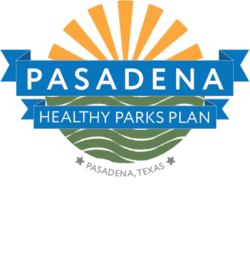

The APA Awards for Excellence in Sustainability honor projects, policies, plans, and people that show exemplary scholarship, leadership and inspiration in sustainability planning and implementation. They represent a diverse range of experiences and industries while possessing a shared attribute: a passion for sustainability and its rewards for our future.

This is the second year that AR has received this prestigious sustainability award – the first being in 2017 when the South Central Waterfront Vision Framework brought home the honor. We couldn’t be more thrilled! Working with the Houston Parks Board, Lands and Water Connections Consulting, Houston Endowment, Pasadena Vibrant Community, and the Pasadena Planning Department, our firm was able to put together a comprehensive plan that promotes a healthy, thriving, and connected Pasadena where safe, beautiful, welcoming parks ensure that everyone has a place to belong, be active, and enjoy nature.
“It was an honor to be able to do this work with the City of Pasadena, the many community members who voiced their vision for the future of healthy parks in Pasadena, and the long list of project partners, collaborators, and funders,” said Principal and Project Manager Katie Coyne, AICP, Certified Ecologist – ESA, SITES AP at Asakura Robinson. “This work directly highlights so many of the values that Asakura Robinson is known for embedding into our work – including the idea that everyone should have access to high quality and multifunctional parks in their community that help to mitigate environmental risks, but also social and economic disparities present in many of the places where we work.”
Criteria for this award addressed the elements of social equity, environmental protection, economic resilience, collaboration, and effectiveness, with emphasis on any unique/innovative strategies or methods that were used to address the specific needs during the implementation of the plan. The goal of the Healthy Parks Plan was to identify the highest priority investments to ensure that Pasadena continues to thrive through making its parks healthy, welcoming, and accessible to all.
Social equity is at the center of the Healthy Parks Plan. Equity was incorporated in two primary ways: (1) equity-driven community engagement; and (2) equity-focused mapping, assessment, and investment recommendations. The equity-driven engagement approach for this effort focused on reducing barriers to participation in planning and ensuring that engagement was demographically representative of the community. The project’s equity-focused mapping approach meant that spatial data on socioeconomic vulnerability, health inequity, existing park access and exposure to environmental hazards were central to determining which areas had the greatest need and greatest potential impact for future park investments.
For environmental protection, the plan identified the best opportunities to benefit both people and local ecosystems through reducing the risks of air and water pollution, extreme heat, and flooding and through promoting biodiversity. Mapping analysis identified both environmentally valuable areas like wetlands and areas that pose environmental risks. The plan’s design guidelines included recommendations for how parks can integrate green infrastructure, ecological restoration, and other nature-based techniques. This reflected community feedback that showed connecting to nature as a top priority for residents. System-wide recommendations included protecting an additional 1,000 acres of natural lands, planting 300,000 new trees, implementing low-impact development standards, and working to improve sites that provide both flood control and recreation.
The Healthy Parks Plan supports economic resilience in a variety of ways. Parks can promote jobs and spending through the economic activity of residents and visitors who use the parks. Since parks promote community health, they can help reduce healthcare costs. And because parks promote civic health and social connections and reduce stress, they may also help reduce additional economic impacts of poverty and crime. Through community engagement it became clear that local leaders see improving the park system as a key opportunity for attracting businesses and keeping young people from moving away. The Pasadena’s Economic Development Corporation was an important partner on the project and is already using Healthy Parks Plan recommendations to inform its investments.
Collaboration was key to successful implementation of this project. The project team used shared principles of equity-driven engagement, including the importance of transparency, accountability, empathy, and humility; acknowledging our own implicit biases and the limits of our cultural competency; sharing decision-making and leadership; and centering the fact that community members are experts on their own needs.
Outreach was conducted at dances for senior citizens, a Mexican wrestling match, a back-to-school event, and local health and dental fairs.
When the Covid-19 pandemic began, the project team had to quickly pivot to ensure representative and authentic participation through remote engagement. The team organized an online mapping application to gather input, conducted broad outreach for using texting to answer key questions for the final phase of planning, and put together a successful community workshop on Facebook Live with a local DJ.
The result of this months-long journey was an effective parks plan that will benefit community members for years to come. The core elements of the plan are (1) Equity-driven engagement; (2) Incorporation of local, scientific, and design expertise; (3) Assessment of existing park and programming resources; (4) GIS-based suitability analysis mapping to help identify priority locations for park improvements and new parks; and, (5) Healthy Parks Design Guidelines. Each element of the plan is intended to ensure that instead of sitting on a shelf, the Healthy Parks Plan provides practical guidance and tools that will continue to be used to make a positive difference for people and for the environment in Pasadena.